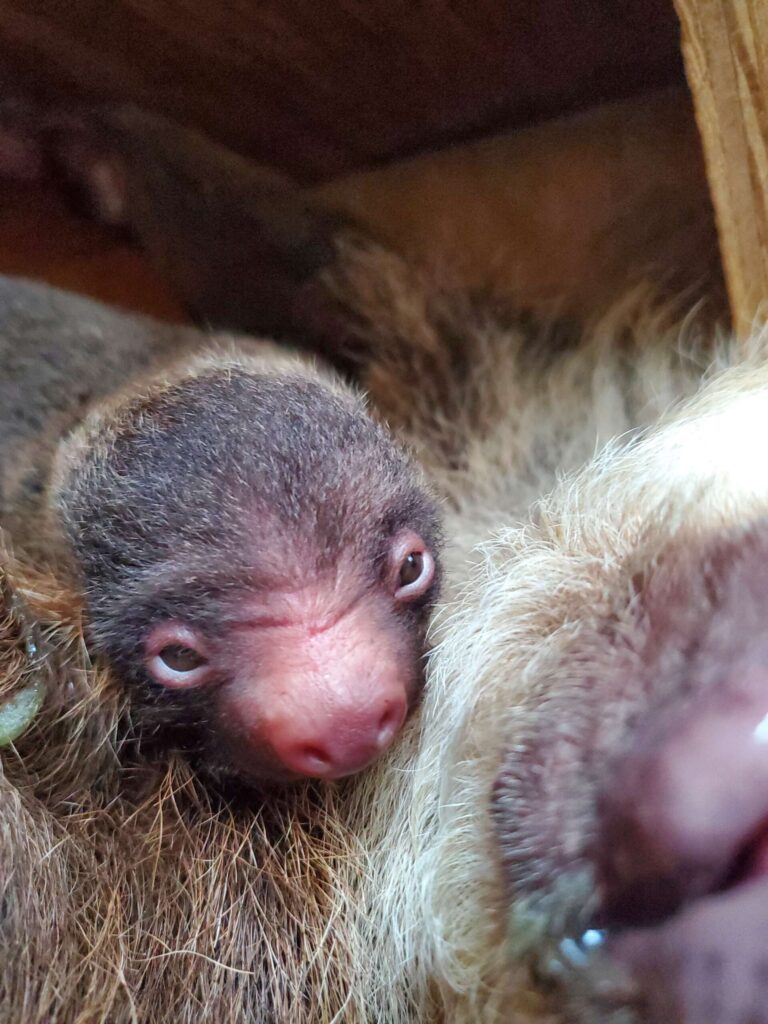Summary of Learning More about Sloths – Zoo Atlanta:
The content is a blog post written by Channing, a Small African Primate and Sloth Care Team member at Zoo Atlanta. Channing discusses their transition from working with hoofstock and elephants to working with primates and sloths. They provide information about sloths, including their natural habitat, wet hair, and the benefits of the algae and fungi that grow on them. Channing also explains how the zoo cares for the sloths and mentions the recent addition to their sloth family. The post concludes by mentioning the Sloth Conservation Project and encouraging readers to vote for sloths to win a grant fund.
Exploring the Enigmatic World of Sloths: Zoo Atlanta’s Fascinating Residents
– Sloths are native to Central and South America rainforests, where their unique adaptations help them thrive.
– Zoo Atlanta goes to great lengths to create a suitable habitat for sloths, mimicking the rainforest conditions.
– The zoo’s sloth family, including new additions, offers visitors a delightful experience.
– Supporting the Sloth Conservation Project at Zoo Atlanta can contribute to sloth conservation efforts in the wild.
Hello there! Welcome to Zoo Atlanta’s wonderful world of sloths, where you’ll discover these enigmatic creatures’ beautiful lives and adaptations. I’m Channing, a member of the Small African Primate and Sloth Care Team, and I’d like to take you on an exciting journey into the lives of our sloth residents at Zoo Atlanta.
1. The Amazing Adaptations of Sloths
Sloths are fascinating animals that have evolved unique adaptations to survive in the rainforest canopies of Central and South America. Their fur, for instance, is typically wet due to the high humidity in their natural habitat. This moisture provides an ideal environment for fungi and algae to grow on their hair, resulting in a greenish appearance. While this might seem strange, it is a beneficial camouflage mechanism, helping sloths hide from predators like harpy eagles and big cats.
Remarkably, some fungi and algae found on sloths’ fur have medicinal properties, preventing bacterial infections and even aiding cancer prevention. This symbiotic relationship truly highlights the wonders of nature and how intricate ecosystems intertwine.
2. Mimicking the Rainforest at Zoo Atlanta
Despite Atlanta’s less humid climate, Zoo Atlanta strives to create an environment for the sloths that closely resembles their natural rainforest habitat. Our dedicated care team ensures that our sloths receive the proper care and attention to maintain their well-being.
To provide the necessary humidity, misting is a crucial aspect of our sloth care routine. Multiple misting sessions, either by hand or using an automatic mister, help the sloths maintain the desired moisture level their skin craves. While we can’t replicate a rainforest’s exact conditions, our zoo efforts ensure our sloths are comfortable and healthy.
3. The Delightful Sloth Family at Zoo Atlanta
On June 18, Zoo Atlanta celebrated the arrival of Nutella, a first-time sloth mom, and Cocoa, a proud dad, for the second time. This joyous occasion on Father’s Day gave us all reasons to smile. Furthermore, Bonnie, another adult female sloth, is expecting, heightening our excitement as we eagerly anticipate the arrival of another adorable infant sloth.
Visitors to Zoo Atlanta are in for a treat as our sloth family, including the new additions, can be observed in the KIDZone habitat, weather permitting. Watching these slow-moving creatures cling to branches with their unique beauty and seemingly endless patience is an experience that leaves a lasting impression.
4. Supporting Sloth Conservation at Zoo Atlanta
At Zoo Atlanta, we recognize the importance of conservation and zoos’ critical role in saving endangered species. The Sloth Conservation Project is one such initiative to preserve the sloth population and their habitat. By visiting the Quarters for Conservation exhibit at Zoo Atlanta, you can cast your vote to support this project. Your contribution can help in the conservation efforts that involve rehabilitating sloths and other native animals for release into the wild, thus ensuring a healthy future for these incredible creatures.
Conclusion:
Exploring the world of sloths at Zoo Atlanta offers a glimpse into the beautiful lives of these extraordinary animals. From their unique adaptations to their delightful presence in the zoo, sloths genuinely captivate the hearts of visitors. As we continue to support conservation projects like the Sloth Conservation Project, we hope to secure a bright future for these beloved creatures and their rainforest homes. So, join us at Zoo Atlanta and embark on a journey that celebrates the uniqueness and charm of sloths.


